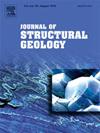Reconstructing the framework of the Paleo-Pacific Plate: A synthetic review
IF 2.9
2区 地球科学
Q2 GEOSCIENCES, MULTIDISCIPLINARY
引用次数: 0
Abstract
The Paleo-Pacific Ocean Basin would evolve from the Panthalassa and develop ancient plates such as Paleo-Pacific, Farallon and Phoenix. Multilines of geological and geophysical evidence indicate that a new-born plate, named the Pacific Plate, would initially develop at 190 Ma among these three plates in the Paleo-Pacific Ocean Basin, but it did not take shape until 55 Ma when the Paleo-Pacific Plate would finally disappear on the East Asian continental margin. Therefore, the Paleo-Pacific Plate and the Pacific Plate would co-evolve or co-exist from 190 Ma to 55 Ma in the Paleo-Pacific Ocean Basin. The ocean basin after the complete disappearance of the Paleo-Pacific Plate at 55 Ma is the Pacific Ocean Basin as presently seen. Geologically, the Pacific Ocean Basin is marked by the initial formation of the plate configuration on the current Pacific seafloor in the Mesozoic. Therefore, when did the Paleo-Pacific Plate begin in the Paleo-Pacific Ocean Basin? When was the Paleo-Pacific Plate subducted beneath the East Asian continental margin? How would its appearance and disappearance are spatiotemporally recorded in geology? What are its geological effects during its subduction beneath the East Asian continental margin? Although there are numerous studies dealing with the formation and evolution of the Paleo-Pacific Plate, the results have brought many big debates on its composition and structure. Some scholars refer to the Paleo-Pacific Plate differently, leading to some great difficulties in academic exchanges. There are three mainstream viewpoints: the Paleo-Pacific Plate is either the Kula Plate, or the Izanagi Plate, or a collage of many plates. Although the Paleo-Pacific Plate existed as a mysterious on Earth in the Mesozoic, a large number of geological observations indicate that its evolution is closely related to the tectonic evolution of the East Asian continental margin in this period. Therefore, it is necessary to recognize and reconstruct the configuration of the Paleo-Pacific Plate and its tectonic effects on the East Asian continental margin. This paper attempts to systematically summarize the previous observations and interpretations of the Paleo-Pacific Plate, to distinguish between the concepts of the Kula Plate, the Izanagi Plate and the Paleo-Pacific Plate in different study stages, and to systematically explore various differences in plate reconstruction since the proposal of the Paleo-Pacific Plate. Based on the current progresses on plate tectonics, this paper also summarizes the relevant geological records of the Paleo-Pacific Plate, including the continental margin accretion of oceanic plateaus, island arc basalt-like magmatic rocks and terrane-collage accretion. The time of its subduction initiation, geometric evolution and spatial range changes are explored, and its tectonic evolutionary history is reconstructed. Finally, remaining problems are presented for the future research.
古太平洋板块格架的重建:综合评述
古太平洋盆地将从泛海板块演化而来,并发展出古太平洋、法拉隆和凤凰等古板块。多种地质和地球物理证据表明,在古太平洋盆地的这三个板块中,一个新生的板块最初在190ma发育,但直到55ma古太平洋板块最终在东亚大陆边缘消失时才形成,并被命名为太平洋板块。因此,古太平洋板块与太平洋板块在190ma - 55ma期间在古太平洋盆地内共同演化或共存。55 Ma古太平洋板块完全消失后的洋盆就是现在看到的太平洋洋盆。在地质学上,太平洋盆地以中生代在现今太平洋海底初始形成板块构造为标志。那么,古太平洋板块是什么时候开始于古太平洋盆地的呢?古太平洋板块何时俯冲到东亚大陆边缘之下?它的出现和消失在地质中是如何记录时空的?它在东亚大陆边缘俯冲的过程中产生了怎样的地质效应?尽管关于古太平洋板块形成和演化的研究很多,但研究结果对古太平洋板块的组成和结构产生了许多大的争论。一些学者对古太平洋板块的说法不同,给学术交流带来了很大的困难。有三种主流观点:古太平洋板块要么是库拉板块,要么是伊扎那吉板块,要么是许多板块的拼贴。虽然古太平洋板块在中生代作为一个神秘的存在于地球上,但大量的地质观测表明,它的演化与这一时期东亚大陆边缘的构造演化密切相关。因此,有必要认识和重建古太平洋板块的形态及其对东亚大陆边缘的构造作用。本文试图系统总结前人对古太平洋板块的观测和解释,区分不同研究阶段的库拉板块、伊扎那吉板块和古太平洋板块概念,系统探讨古太平洋板块提出以来在板块重建上的各种差异。在板块构造学研究进展的基础上,总结了古太平洋板块的相关地质记录,包括海洋高原的大陆边缘增生、岛弧玄武岩样岩浆岩和地质体拼贴增生。探讨了其俯冲起始时间、几何演化和空间范围变化,重建了其构造演化史。最后,提出了今后研究中有待解决的问题。
本文章由计算机程序翻译,如有差异,请以英文原文为准。
求助全文
约1分钟内获得全文
求助全文
来源期刊

Journal of Structural Geology
地学-地球科学综合
CiteScore
6.00
自引率
19.40%
发文量
192
审稿时长
15.7 weeks
期刊介绍:
The Journal of Structural Geology publishes process-oriented investigations about structural geology using appropriate combinations of analog and digital field data, seismic reflection data, satellite-derived data, geometric analysis, kinematic analysis, laboratory experiments, computer visualizations, and analogue or numerical modelling on all scales. Contributions are encouraged to draw perspectives from rheology, rock mechanics, geophysics,metamorphism, sedimentology, petroleum geology, economic geology, geodynamics, planetary geology, tectonics and neotectonics to provide a more powerful understanding of deformation processes and systems. Given the visual nature of the discipline, supplementary materials that portray the data and analysis in 3-D or quasi 3-D manners, including the use of videos, and/or graphical abstracts can significantly strengthen the impact of contributions.
 求助内容:
求助内容: 应助结果提醒方式:
应助结果提醒方式:


